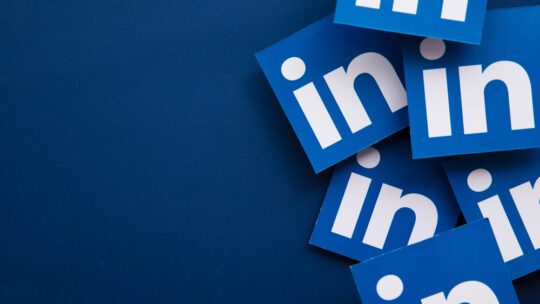
Over the past year LinkedIn has seen impressive growth. They’ve surpassed a billion users, witnessed a 42% increase in content shares, and specialized features like newsletters have attracted over 450 million subscriptions. And LinkedIn’s product team has transformed the platform into a dynamic space for executives well beyond standard short-form content and simple brand amplification.
But corporate teams are vastly underutilizing one of LinkedIn’s most valuable tools—its data. Executives and their teams are not fully leveraging the extensive range of data available, nor are they adequately using it to refine their platform and social strategy recommendations.
This oversight is partly due to the structure of LinkedIn’s data ecosystem—Microsoft, which owns LinkedIn, maintains stringent user privacy standards. There are no third-party tools that connect to LinkedIn’s API to allow comprehensive metrics pulls from across the platform. Instead, data either gets generated manually—which is highly time-consuming—or is collected through back-end access to an executive's profile. But even with direct access to a profile, the data is fragmented across three main sources that don’t seamlessly integrate into one coherent dashboard—making it harder to get meaningful insights.
Challenges to Data Integration
The most widely-used data source is the “creator mode” dashboard, which provides a high-level overview of an executive’s LinkedIn page performance, including followers, impressions, engagements, top posts and broad demographic data. But this one data source is just the tip of the iceberg in terms of truly understanding how well an executive’s LinkedIn profile is performing.
While the dashboard offers a broad overview, getting detailed post-level data requires manual digging. Other potentially meaningful data layers include profile view statistics—which give executives a holistic analysis of who is viewing their profiles—along with demographic and geographical information about these viewers. LinkedIn also provides a unique analytics dashboard that shows how each individual piece of content performed. The up-and-down fluctuations in profile followers can also be analyzed to determine what content attracts more followers, and what loses them.
With all this extremely valuable data available, the main challenge is integrating it all. The lack of easy integration means executive teams have to manually merge and analyze all the data to get a comprehensive view of what’s working and what’s not, and where there might be white space to lean into.
Following are three recommendations to help you harness LinkedIn data to make faster and smarter decisions with greater ROI for your executive eminence programs.
Develop a Comprehensive LinkedIn Data Lake Hub
Step one is to aggregate all available LinkedIn data sets—individual post-level data, creator mode insights and profile viewership statistics—into a single, centralized hub. You do this by downloading and manually pulling key data points around an executive’s profile, and cleaning and organizing the data so it can be analyzed at a moment’s notice.
Establish a Rigorous Data Collection Cadence
Whether you use manual analysis or leverage AI technology, it’s essential to develop a systematic data collection process with checks and balances that mitigate manual collection errors. Establishing a clear and consistent collection rhythm is how you can most effectively harness your LinkedIn data's full potential.
At MikeWorldWide, we collect “creator mode” and profile data monthly, while post-level data is added two weeks after each post is published to get a fuller picture of the content’s shelf life. The frequency of data inputs varies depending on the specific goals of the campaign. Big campaigns, for example, might require weekly or even daily updates to get the quick insights needed for initiatives like paid thought leadership campaigns.
Use Advanced AI for Better Data Analysis and Content Recommendations
AI excels at processing vast datasets quickly and revealing complex patterns that may not be immediately obvious, and teams should use these tools to improve data lake analysis. A critical part of success in LinkedIn thought leadership campaigns is being able to predict which types of content will resonate most strongly with different segments of an audience—including the most effective times for posting—and machine learning is uniquely suited for this task.
AI can also estimate the potential effectiveness of various content strategies or copy recommendations, helping you make data-driven decisions with increased precision and confidence. Incorporating technologies like AI alongside your data lake can significantly improve your chances of building meaningful executive visibility and corporate reputation on LinkedIn.
Clayton Durant is Director of Emerging Media & Platform Strategy at MikeWorldWide. Dorianne Ciccarelli is VP of Digital at MikeWorldWide.
